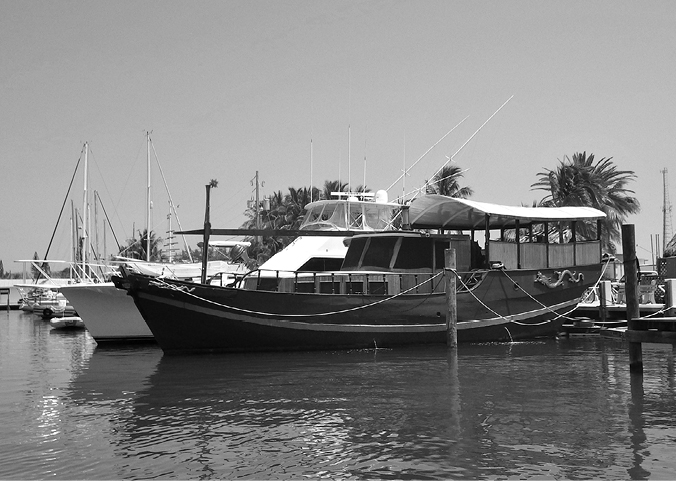
The Sea Around Us

Marina Location Versus Regional Physiography
When evaluating a marina in a coastal region, take time to assess its location versus the overall regional physiography (land-based topographic relief, geographic orientation of the coast, bathymetry of inshore and offshore areas, etc.). All of these physical characteristics can have a major impact on your boating experiences as well as conditions within your marina. This is especially important if you are moving to a new region so beware of your new surroundings (and potential hazards). For example, three marina settings are compared below:
Coastal
If the marina is located on the coast and with only partial barriers for waves entering from offshore, consider the following advantages and disadvantages for this type of marina:
|
Coastal Marina Advantages and Disadvantages |
|
|
ADVANTAGES |
DISADVANTAGES |
|
|
River
If the marina is situated on the bank of a river or within the East Coast Intracoastal Waterway, other conditions are encountered:
|
River Marina Advantages and Disadvantages |
|
|
ADVANTAGES |
DISADVANTAGES |
|
|
Harbor or Embayment
The majority of marinas are located within a harbor, cove or bay to provide relatively good protection from the ocean or coastal environment. Depending upon the local water depth, flushing efficiency and sources of manmade pollution, the water quality of the harbor can range from good to poor so there’s no guarantee of what you will encounter without investigating the marina yourself. Other characteristics of harbor marinas are typically midway between those given above for Coastal and River locations. Depending upon which situations are ‘show-stoppers’ for you, visual assessment is likely necessary for comparison.
Offshore Sea Conditions
If a boater is considering using his/her vessel in unfamiliar territory, it is very important to investigate the ocean environment outside of the harbor, via reading about local boating activity as well as visiting NOAA websites to monitor local weather forecasts and offshore buoy conditions, and study historic wave and wind climatology. The importance of this can be explained through a simple case study: An East Coast boater moves to a town on the central California coast. On the first windless day he launches his 18-foot center-console boat. Venturing out of the harbor, he encounters 10-foot breaking swell at the channel entrance, nearly capsizing his boat when turning back; certainly a tough way to learn about California’s long-period swell, often in the absence of local winds.
Similarly, boaters need to develop familiarity with typical sea conditions outside of harbors before they make final decisions on vessel purchases and their intended marina. Boaters who are new to the ocean or others who are considering a larger vessel for a live-aboard lifestyle must become aware of local sea conditions that can adversely impact their experiences, or worse.
In the section named “Weather and Storm Forecasts” in Chapter 10, an extensive list is provided of government and commercial websites for weather, wave, tide and storm forecasts and real-time data dissemination. Boaters should determine which websites are most informative for his/her region and keep ‘tuned-in’ at all times. Even if you aren’t planning a day on the water, your property is at risk when storms approach your marina.
Offshore Fishing Activity
When boaters move to a new marina and/or harbor they must learn about the types of recreational and commercial fishing that is conducted in the region, as well as state fishing laws and regulations. This is important because fishing activity can pose significant hazards to vessel traffic depending upon the type of fishing equipment and procedures used. Examples are given below but there certainly are many types that are not mentioned here.
- Fixed and drifting gill nets are permitted in certain areas. Surface buoys are used to mark the ends of the fishing nets and lights should be used during night but not all fishermen abide by these regulations. Consequently, boaters should know how to identify such nets and anticipate which horizontal direction the gear is oriented so their vessel’s props keep well clear of such fishing nets and buoy lines.
- Long-line fishing involves baited hooks on short leaders attached to a strong, primary line that can extend for a quarter-mile or longer. Anchors keep the ‘long line’ stationary and surface buoys are used to mark the ends. If additional surface-marker buoys are not distributed along the line, vessels may unintentionally cross the fishing gear and become tangled.
- Aquaculture areas are typically stationary and well marked to prevent boaters from interfering with submerged nets and/or vertical arrays for shellfish growth.
- Weirs are long vertical nets oriented perpendicular to shore for redirecting all passing fish into a circular type of net ‘bowl’ where they are unable to find a way to escape for the 6- to 12-hour time period before the fisherman returns to retrieve the catch from his/her net. The weirs are always anchored in the same location and typically marked on local nautical charts, although they may not be deployed year-round. These large (sometimes a mile long) fishing contraptions have very heavy wire and surface buoys that if tangled with a vessel’s keel or running gear can become a major problem. Boaters must stay clear of weirs during daylight and darkness.
- Fish, lobster and crab traps have surface buoys tethered to one or more traps on the bottom. The line beneath the buoy is often slack with the result that considerable line can accumulate just below the surface and foul propellers of vessels that pass close to the buoys. In some regions, multiple traps can be attached to a single ground line with a vertical section of line at each end and marker buoys at the two ends. If a vessel becomes fouled with one of these multiple-trap assemblies, it can be very difficult to haul up enough line to create slack for untangling or cutting.
- Purse seiners are large fishing vessels that move in a circle when deploying a long vertical net around a school of surface fish that has been targeted for capture. Quite often, a small boat (tender) is attached to the end of net and deployed at the start of the process. When the large vessel circles around and links up with the tender, the net is closed and tightened to make a ‘purse’ that captures the fish inside. These vessels can work by day or night and must be given a wide berth by boaters because they move rapidly and use heavy, dangerous equipment.
- Trawling vessels tow large nets or bottom dragging equipment to catch fish or clams. They typically travel in a straight path for hours, then turn and steam quickly to wash their fishing nets before hauling in to remove their catch. They cannot maneuver well with the trawled gear deployed behind. Consequently, boaters should give trawlers a wide berth.
- Trolling vessels typically use rod and reel equipment during fishing charters with small groups of fishermen aboard. Fishing lines extend behind the trolling vessels, with lures and bait at or near the surface. Boaters must keep far from these fishing vessels to prevent cutting their trolling lines. Most importantly, when they are catching a ‘big game’ fish, they may have up to a half mile of line out and be showing a white flag with a blue fish on it. Keep far away from these busy fishing vessels.
- Moored and drift fishing vessels may be small or large, with dozens of fishermen aboard. Their lines are typically vertical so they represent a minimal hazard to cruising.
- Dive boats, regardless of size or numbers of scuba divers, must show a red and white ‘Diver Down’ flag at all times that divers are in the water. Boaters must keep at least 100 yards from such vessels for safety of divers who may be on the surface or rising from depths and unaware of passing vessels.
Anchored Obstructions and Eyesores
When selecting a marina, having a pleasant view of the nearby sea- or landscape is important, although it’s less significant than many other features addressed herein. Assuming you only live once, who doesn’t want to see the sunset and occasional Green Flash from the cockpit of their vessel every evening while tied securely in your slip? It is possible at some locations.
The worst case is when you sign a marina tenant agreement at a facility with wonderful views of the harbor and city skyline but soon discover that a three-year construction project is about to begin next to your marina. Tall cranes, loud pile-drivers, barges, tug boats and large trucks will all be working six days per week with no noise restrictions. Such projects do occur, often to the marina tenant’s surprise.
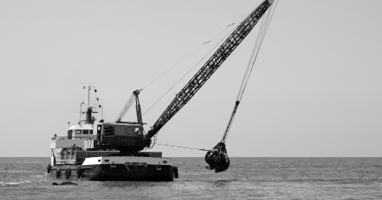
Similarly, yearlong dredging projects can begin very close to marinas, with tenants having no say about the unsightly dredges and pipes, or the loud noise and diesel fumes that waft downwind from the working equipment. Yes, the channel dredging is necessary but your views and quality of marina life surely will be affected.
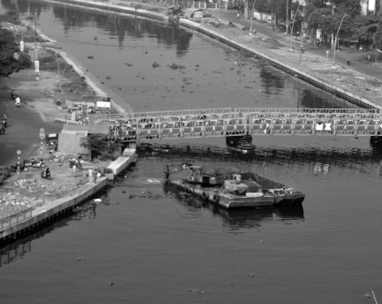
If you’re already a marina tenant when these construction projects begin, there’s nothing you can do about it. But if you’re assessing which local marina would provide best dockage for your vessel, be sure to inquire about any major construction that would be within view of the marina. Honest marina managers will explain what’s on the construction schedule, if anything, and they might offer a discount on your slip rate as is customarily done at hotels which are under construction. Negotiate as best you can before you sign a tenancy agreement.
Wave Conditions in the Marina
All marinas have an opening for access to the sea and depending upon the width and geographic orientation of the opening, waves can enter, either directly from the sea or simply from across the harbor. If the harbor is wide, strong winds can generate moderate-sized waves even though the ‘fetch’ is limited. The worst case is where a marina is situated at the coast or on the shore of a large bay and its opening directly faces the sea with unlimited fetch. Large waves from storms can enter the marina and cause major damage to piers and vessels.
Inexperienced boaters might look at the exposed type of marina favorably because it offers nice views and quick access to the ocean. Experienced boaters typically stay away from these marinas altogether. A telltale sign of whether a marina is severely impacted by large offshore waves is the location of existing boats. If none are close to the opening, there is a good reason, but even those berthed around the corner will be bashed by large waves that enter the marina, bounce off solid walls and create a confused sea farther in.
|
AUTHOR RECOMMENDATION |
|
Assess the exposure of a marina to seas from offshore. Also learn the prevailing wind conditions to determine whether a marina will be choppy most of the boating season, even in the absence of storms. |
Bridges and Other Navigation Restrictions
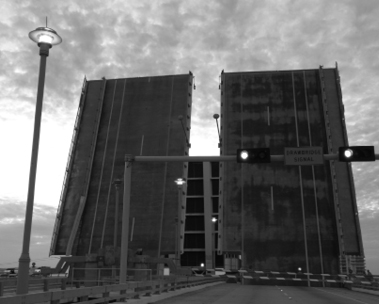
Major U.S. rivers and the Intracoastal Waterway (ICW) along the U.S. East Coast are well traveled by vessels of all sizes. Relatively small power vessels with low vertical profiles and small sailboats with low masts can transit beneath most bridges of rivers and the ICW with ease, also negating the need for bridge openings. Larger vessels of both categories require bridge openings for passage and many of which are prescheduled versus opening on demand.
Owners of large vessels must be cognizant of all bridges in the vicinity and their schedules for opening. Marinas that are seaward of bridges therefore are more desirable for large vessels versus those that will require the vessel to abide by scheduled bridge openings for outbound and inbound passage.
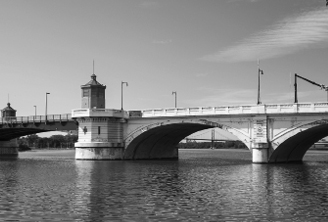
The significance of marina location versus low bridges is even greater if the marina is located up a river with numerous low bridges that require opening for vessel passage. For some marinas located up major rivers in Florida, vessels must request four or more bridges to open for their passage, before they reach the ICW — a river transit of nearly an hour each way. Boaters must consider this predictable delay if they choose one of the marinas located far up river. Furthermore, transiting the heavily trafficked rivers can be stressful and potentially dangerous for inexperienced boaters. The same situation occurs in rivers of other metropolitan areas around the nation.
Commercial Vessel Traffic
Marinas differ with regard to their proximity to commercial vessels and this can result in noise, privacy and safety problems at some locations. Examples are given below:
Chartered Fishing Boats
Many marinas permit chartered fishing boats to conduct public business from their piers. While fishing is enjoyable for many and it is exciting to see the day’s catch come ashore, there can be a few disadvantages of having chartered vessels near your slip:
- Noise from vessels starting engines for early morning charters
- Foot traffic, noise and lack of privacy from public patrons on the docks
- Sometimes noisy crew from fishing boats, celebrating at day’s end
- Gulls, pelicans or other sea birds flocking around boats and fish-cleaning tables
If possible, request a slip some distance down the dock from such fishing boats.
Sightseeing Vessels, Ferries and Water Taxis
Most city marinas and some private facilities allow commercial vessels to lease slips for various types of tourist business. All involve large numbers of persons congregating on the adjacent docks and consuming nearby parking spaces. It is recommended that boaters who like privacy and security be aware of any potential commercial ventures at the marina they are considering tenancy. Furthermore, some of these waterborne businesses are seasonal and could be inactive when you first visit a marina. Ask marina management and local boaters if boating activity increases significantly during the busy season, and why. Also, look for signs that suggest commercial marine enterprises flourish during certain months.
Coast Guard, Border Patrol, Fire and Police Vessels
While it is typically advantageous to have a police presence near your home or vessel, it is best if their docks are not close to yours on account of vessel noise, especially during the night. Take note of berthing areas for municipal vessels when you are viewing a marina.
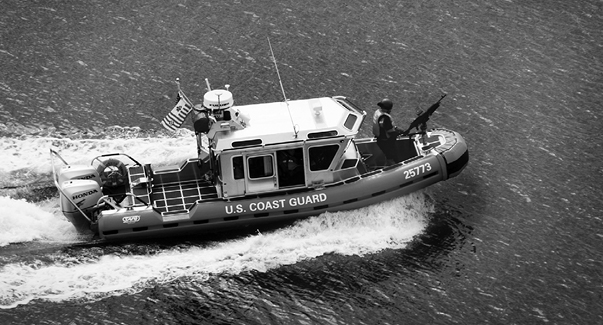
Naval Vessels
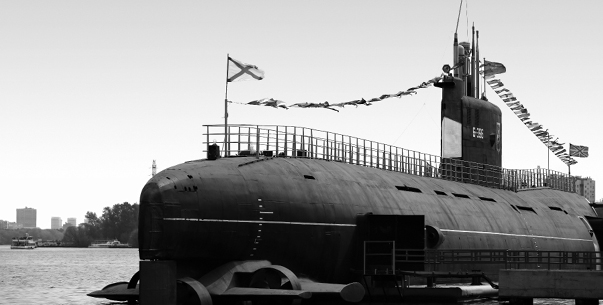
In many large harbors, U.S. naval vessels have a significant presence and their speeding security vessels are vigilant about keeping channels free of recreational traffic during times of naval vessel passage. In harbors that are home port for submarines, aircraft carriers and other very large vessels with surveillance technology, it is not uncommon for waterways to be closed altogether for up to 30 minutes on both sides of departure and arrival. This is certainly an inconvenience for casual boaters but it is best to be aware of such potential delays as you plan your boating schedule.
Most importantly, boaters must acknowledge that all naval, federal and municipal patrol vessels have the right of way over all other vessels, both commercial and recreational.
Vessel Traffic Separation Zones
U.S. Coast Guard Rules of the Road (2014) and nautical charts specify Traffic Separation Zones to be used by all vessels as they approach and depart from harbors with extensive commercial and/or naval traffic. Recreational boaters must abide by these rules and determine the location of any Separation Zones, especially if the navigation area is new to him/her. Being uninformed is not an acceptable plea when Coast Guard Patrol boards your vessel because of a violation.
Water Clarity in the Marina
Water clarity is typically a concern when a vessel is making fresh water from seawater by desalination equipment and this occurs only when a vessel is away from a marina for extended periods of times (days to weeks). Highly turbid water can clog raw water intake strainers for engines, generators and air conditioner circulating pumps but this equipment is not run long while a vessel is at the dock.
Consequently, water clarity in a marina is mostly an aesthetic issue but clear water certainly does give the boater a more enjoyable experience at the dock rather than dark, green or highly turbid waters, even if they are pollution-free. When evaluating marinas, note that it’s not uncommon for water clarity to vary considerably among marinas in the same harbor or general vicinity, especially those close to rivers or shallow bays that are prone to high concentrations of suspended sediment. Algal blooms and Red Tides typically occur during warm months when water temperatures are elevated.
